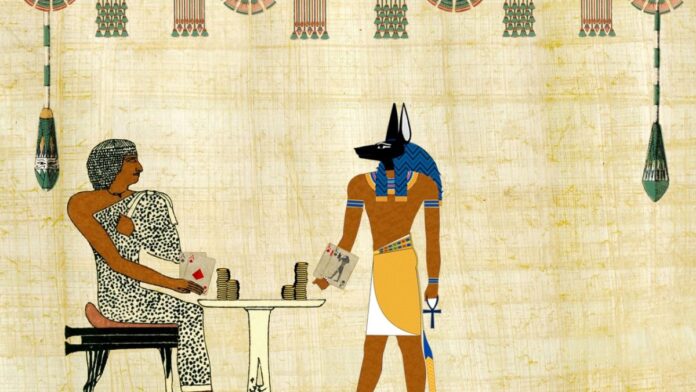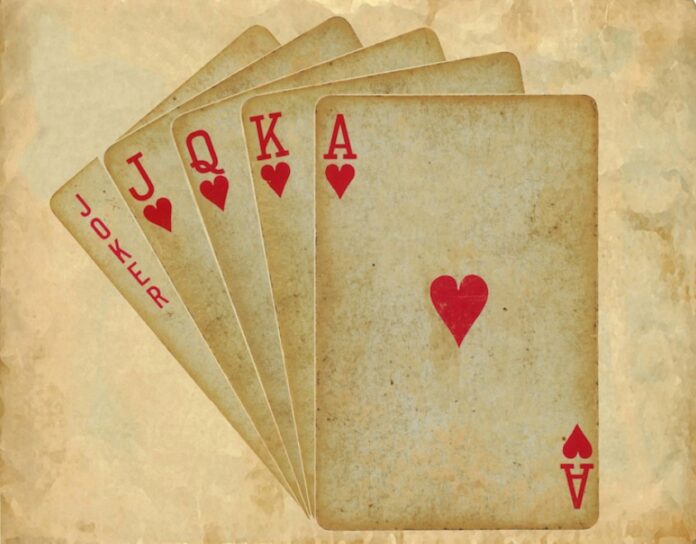Poker is a popular game that has been around for centuries and has seen a resurgence in recent years due to its inclusion in various forms of media, broadcasts, and tournaments.
All types of poker involve the same key principles: players are dealt cards, wager on their hand’s strength and attempt to win by having the highest-ranking hand, or by convincing opponents to fold. Developing solid card-counting strategies can also give players another way to increase their chances of success.
1. Origins of Poker

Poker dates back to the 17th century when it was based on the Persian game As Nas. This game features 25 cards that were placed in a 5×5 grid, and players would bet money on what they thought was the highest combination of cards. In the 19th century, this game moved to America and quickly became popular in Europe as well.
Throughout this time, it has been speculated that Poker originated with different types of card games during the Renaissance era. These included Brelan and Primero (which were popular among French royalty). As these card games traveled to other countries, they took on different forms, such as Brag or Poque (in England) and Pochen (in Germany).
Poker began taking its current form around 1834 with a game called 20 Cards or 20-Card Draw. This variation used only 20 cards and added elements like bluffing and betting which are great staples of today’s Poker games. From this point onward, more variations came up including Five Card Draw (1875), Seven Card Stud (the 1880s), Straight Poker (around 1890), and Texas Hold ’em (1920s) – which had become one of the most popular variants by 1967 – and finally Omaha (equally as popular but dates back even further to 1932).
Today, there are numerous sites such as online pokie where you can play every variation of the game and offer many bonuses and promotions.
In recent years, new varieties including H.O.R.S.E., Badugi, and 2-7 Triple Draw have all come into play mainly within competitive tournaments such as The World Series of Poker; which started in 1970 with several professional players vying for a cash prize pool of $30 thousand dollars!
2. The Evolution of Card Counting

Over time, people began to discover ways to gain an advantage in the game. One of the earliest methods was card counting, which then led to other derivatives such as shuffle tracking and ace sequencing. Card counting is a skill that allows a player to track which cards have already been dealt in order better assess their chances of winning.
Although it takes practice and experience to master, card counting can give an advantage in nearly any type of table game that uses playing cards as a method of randomization. Players typically use ordinal numbers – like 1, 2, 3, etc. – to assign a point value to each card and keep track of them in their heads.
Aces are often viewed as either +1 or -1 depending on the situation. This can allow players to have a better understanding of what’s left in the deck and what cards they could potentially be dealt during their turn.
High/Low System
Developed by Edward Thorp in his book Beat the Dealer, this method simply assigns each card a positive or negative value (minus one or plus one). All 10’s and Face Cards are considered negative, while 2 – 6 are positive. As the play progresses, card counters will assign the cards played a point value which is then added to an ever-changing count to determine when it’s time to raise bets or be more conservative with their wagers.
Hi-Lo Lite System
Created by Gus Hansen in his book Every Hand Revealed, this strategy is popular among professionals and recreational players alike because it’s easier to remember than other methods of card counting such as Red 7. 2 through 6 receive +1, while 10’s through Ace receive -1; all other numbers receive neutral ratings (i.e., 0).
This system allows counters more flexibility with their bets based on the count they obtain; if it’s higher than 1 they know it’s time to raise bet sizes whereas if it’s below 1 they can be more conservative with their bankrolls in order preserve profits for future wins.
3. Famous Gamblers

The most famous card counters throughout history have all developed unique strategies for knowing when and how to place bets. Some of these individuals include Edward Oakley Thorp, also known as “the Father of Card Counting”, Stanford Wong, and Ken Uston, who are both renowned for their strategy books on card counting.
Ed Thorp is recognized as one of the first pioneers in using mathematical concepts to gain an advantage over the casino in blackjack by setting his own betting strategy. He moved from Blackjack to Poker, and he wrote a number of influential books about different techniques such as shuffle tracking and competition play like playing poker against friends or family on a home table.
Stanford Wong is another notable name in this field; he has written over fifteen influential books on gambling strategies. He used a base count instead of watching each individual card while playing Pai Gow poker. He documented his findings in two books named “Professional Blackjack” and “Winning Recollections” which further solidified his standing among experts.
Ken Uston made his name when he successfully sued casinos that were refusing him entry after they identified him as a professional player who was counting cards at their tables; he went on to lead some major victories against Atlantic City’s biggest casinos through subsequent legal cases with varying success rates.
Ken wrote several books documenting his methods, particularly highlighting blackjack strategies without resolving to mental calculation but by keeping track with a point system for estimation based on certain patterns during play periods where each ace or court card could tag anywhere between +1 or -1 depending on its position within the set being dealt out at a particular time frame; primarily concentrating on jumping between tables without letting any suspicions develop about winning probabilities being tampered with by this method which was branded ‘Uston’s Ace-Five Count’ strategy.
Conclusion
At the end of the day, poker – along with card counting – provides a rewarding experience both at the physical and online tables. The next time you play your favorite variation of this classic game, take a few moments to appreciate its rich history and learn different strategies that may work well for you. With a bit of luck and skill, your next gaming session may be your most profitable one yet!









